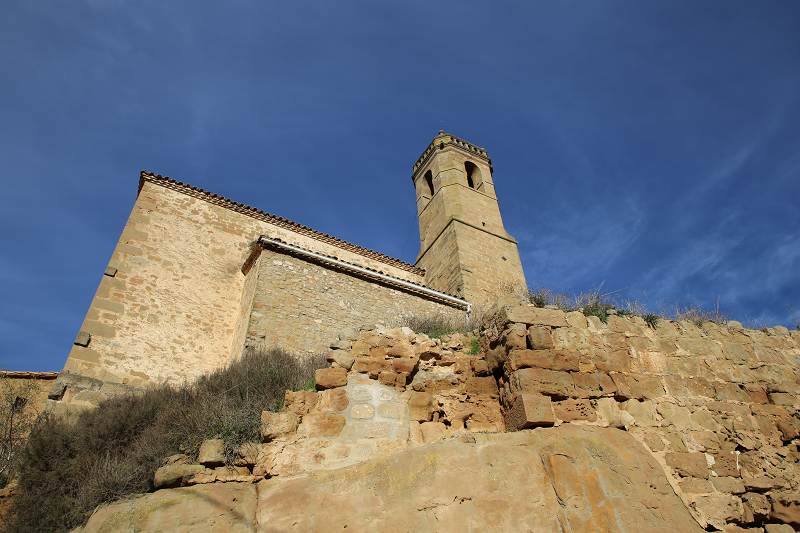Lloberola (Tower) Castle (cat. Castell de LLoberola) is located in Lloberola, a village within the town of Biosca, in the comarca of Segarra (cat. Biosca (la Segarra)), Lleida province, Catalonia, Spain, declared to be an object of cultural heritage of all Hispanic importance. It rises a hundred meters above the left bank of the Lloberola River – a tributary of the Sallent River (cat. Sallent). The castle, located on the border of the Solsones plain (cat. Solsonès) and the valley of Llobregos, can be discerned with the naked eye from Ribelles castle.
The first documented mention of the town of Lloberola is in the testament of Ermengol I of Count Urgell (cat. Comte d’Urgell Ermengol I), dated 1007 (1009). The very first written evidence of a castle is in a document from 1041 about the sale of the garden. Since 1046, there is a written record of a certain Ramon Guillem de Lloberola (cat. Ramon Guillem de Lloberola), who most likely was a castellan. Sovereignty over the castle was carried out, apparently, by the Counts of Urgell, and therefore, in 1167, Count Ermengol VII of Urgell bequeathed the castle to his son Ermengol VIII.
In 1172, the castle belonged to Pere Sanz de Llobera (cat. Pere Sanç de Llobera), who received it through his spouse, Dolsa (cat. Dolça), who, in turn, received it from Viscount Ramon Folc de Cardona. In 1225, Guillem, Viscount of Cardona (cat. Guillem, vescomte de Cardona), made a will, which left his castle in Lloberola to his son Ramon Folk. The surviving documents confirm that the Cardona clan owned the castle until the XIV century.
In 1736, the castle belonged to a certain Michela d’Agule-Pinos, Marquis de Gironella (cat. Miquel d’Agulló-Pinós marquès de Gironella), who lived in Barcelona.
Lloberola Castle belongs to the pre-Romanesque era, and in its origin Muslim roots can be traced: the fortress faces the north to protect its most vulnerable stretches of plain. Then the second fortress appears – in such a way that both look over each other. Over the course of the year 1000, a series of locks supporting each other were extended: Valferosis (cat. Vallferosa), Ardevol (cat. Ardèvol), Ponts (cat. Ponts), Orenga (cat. Orenga) and others.
The castle towers on a hill and is 30 meters long and 13 meters wide. Judging by the remaining ruins, it was built in stages. The oldest part is the wall encircling the north-western segment of the hill, and from which several fragments are preserved, built of large stone blocks fastened with lime. The next stage was the construction of a trapezoid tower from the south; its ruins are now preserved to a height of 6 meters (although it seems that initially it was much higher), and the perimeter wall, the remains of which can be seen today, for example, from the western side of the perimeter. There are holes in the wall for the floor beams. The third stage was the consolidation of the walls of the tower from the outside to increase its height, and the erection of the curved wall in the south to cover and strengthen the old wall. The walls of this second tower are adjacent to the southern, eastern and western sides of the first tower.















